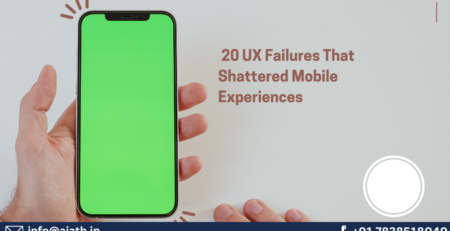Hyperledger and Smart Contracts
Introduction:
Hyperledger and smart contracts represent two significant aspects of blockchain technology, playing pivotal roles in enhancing the security, transparency, and efficiency of various industries. In order to delve into these concepts comprehensively, it is essential to explore the foundations of blockchain and its evolution into Hyperledger, as well as the intricate workings of smart contracts.
Blockchain and Its Evolution:
Fundamentally, blockchain is a distributed, decentralized ledger system that keeps track of transactions over a computer network. The primary objective is to create a secure, transparent, and tamper-resistant system for managing and recording transactions. It gained widespread recognition with the advent of Bitcoin, the first cryptocurrency, which utilized blockchain to enable peer-to-peer transactions without the need for intermediaries.
As the blockchain ecosystem expanded beyond cryptocurrencies, various industries sought to leverage its benefits. This led to the development of Hyperledger, a collaborative project hosted by the Linux Foundation. Hyperledger aims to advance cross-industry blockchain technologies by providing a framework for the development of enterprise-grade, open-source blockchain solutions.
Introduction to Hyperledger:
Hyperledger is not a singular blockchain but rather an umbrella project that encompasses a variety of frameworks, tools, and libraries. Each of these components is designed to address specific challenges faced by businesses seeking to implement blockchain solutions. Some notable Hyperledger projects include Fabric, Sawtooth, Indy, and Iroha, among others.
– Hyperledger Fabric: Fabric is one of the most prominent frameworks within Hyperledger. It offers a modular architecture, enabling businesses to customize their blockchain networks to suit their specific requirements. Fabric supports smart contracts, consensus algorithms, and membership services, making it suitable for a wide range of applications.
– Hyperledger Sawtooth: Sawtooth emphasizes simplicity and modularity, allowing for easy deployment and maintenance of blockchain networks. It employs a unique consensus algorithm called “Proof of Elapsed Time” (PoET), which enhances scalability and energy efficiency.
– Hyperledger Indy: Indy focuses on decentralized identity. It encourages privacy and security in identity management by empowering people to take control of their digital identities independently of a centralized authority.
Smart Contracts:
Embedded inside their code, smart contracts are self-executing programs with explicit contract criteria. These contracts automatically execute and enforce the terms when predefined conditions are met, eliminating the need for intermediaries and enhancing the efficiency of transactions.
The concept of smart contracts was first introduced by Nick Szabo in the 1990s, but it gained widespread attention with the rise of Ethereum. Ethereum introduced a Turing-complete programming language, allowing developers to create complex smart contracts on its blockchain.
Integration of Hyperledger and Smart Contracts:
Hyperledger frameworks, such as Fabric, support the implementation of smart contracts to automate and enforce business logic. In Hyperledger Fabric, smart contracts are known as “chaincode.” Chaincode in Fabric can be written in programming languages like Go or JavaScript, providing flexibility to developers.
The integration of smart contracts within Hyperledger networks enhances the automation of business processes, reduces the risk of human error, and ensures the transparent execution of contractual agreements. This is particularly beneficial in industries such as supply chain management, finance, healthcare, and more.
Benefits and Challenges:
The marriage of Hyperledger and smart contracts offers several advantages. These include increased efficiency, reduced costs, enhanced transparency, and improved security. Businesses can streamline their operations and create trust among participants in a network.
However, challenges persist, such as the complexity of developing and auditing smart contracts to ensure they function as intended. Additionally, scalability and interoperability issues may arise as blockchain networks grow in size and complexity.
Advantages of Hyperledger and Smart Contracts:
Transparency and Immutability:
One of the primary advantages of Hyperledger and smart contracts is the transparency they bring to transactions. The decentralized nature of Hyperledger ensures that all participants in a network have access to the same, unalterable ledger. Smart contracts, once deployed, are immutable and transparent, reducing the risk of fraud and manipulation.
Enhanced Security:
Hyperledger leverages robust cryptographic techniques to secure transactions, and smart contracts add an additional layer of security by automating the execution of predefined rules. The decentralized nature of Hyperledger frameworks reduces the risk of a single point of failure, making it more resistant to cyber attacks.
Reduced Intermediaries and Costs:
Smart contracts enable automated execution of agreements, eliminating the need for intermediaries in many transactions. This not only reduces costs associated with intermediaries but also accelerates the speed of transactions, making processes more efficient.
Customization and Flexibility:
Hyperledger frameworks, such as Fabric, offer a high degree of customization. Organizations can tailor their blockchain networks to meet specific business requirements. Smart contracts, written in programming languages like Go or JavaScript, provide flexibility in implementing complex business logic.
Improved Traceability in Supply Chains:
In industries like supply chain management, Hyperledger can enhance traceability. The immutability of records ensures that every step in the supply chain is recorded and transparent. Smart contracts can automate processes, such as payment upon delivery, reducing delays and errors.
Decentralized Identity Management:
Hyperledger Indy focuses on decentralized identity, providing users with more control over their digital identities. This can significantly enhance privacy and security, particularly in scenarios where identity verification is crucial, such as financial services.
Efficient Cross-Organizational Collaboration:
Hyperledger facilitates secure collaboration among multiple organizations by providing a shared, decentralized ledger. Smart contracts automate and enforce agreements between participants, fostering trust and efficiency in cross-organizational collaborations.
Scalability and Performance:
Some Hyperledger frameworks, like Sawtooth, employ innovative consensus algorithms, improving scalability and performance. This is crucial for applications requiring a high transaction throughput, ensuring that the blockchain network can handle increasing workloads.
Compliance and Governance:
Hyperledger frameworks often include features that help organizations comply with regulatory requirements. Smart contracts can be designed to enforce compliance automatically, reducing the risk of non-compliance and associated penalties.
Global Accessibility:
Hyperledger networks, being decentralized, can be accessed by participants globally. This opens up new opportunities for businesses to engage with partners and customers across borders, leveraging the advantages of blockchain and smart contracts on an international scale.
Disadvantages of Hyperledger and Smart Contracts:
Complexity in Development:
Developing applications on Hyperledger and writing smart contracts can be complex. The learning curve for developers can be steep, and the need for specialized knowledge in blockchain technologies may hinder widespread adoption.
Smart Contract Security Risks:
Despite their security features, smart contracts are not immune to vulnerabilities. Flaws in code can lead to exploits, and the irreversible nature of blockchain transactions can amplify the impact of security breaches.
Scalability Challenges:
As blockchain networks grow, scalability becomes a concern. The increased size of the ledger and the consensus mechanisms may impact the performance of the network. Addressing scalability challenges is an ongoing focus in the development of Hyperledger frameworks.
Integration with Existing Systems:
Integrating Hyperledger into existing enterprise systems can be challenging. Legacy systems may not seamlessly connect with blockchain networks, requiring significant effort and resources for integration.
Regulatory Uncertainty:
Blockchain and smart contract regulations are still developing fields. Uncertainty about legal frameworks and compliance requirements can be a barrier to adoption, particularly in industries subject to strict regulations.
Energy Consumption:
Some blockchain networks, including those in the Hyperledger ecosystem, require significant computational power for consensus mechanisms. This can lead to high energy consumption, raising environmental concerns in an era focused on sustainability.
Lack of Standardization:
The absence of standardized protocols across the blockchain industry can lead to interoperability challenges. Different Hyperledger frameworks may use distinct standards, hindering seamless communication between networks.
Privacy Concerns:
While blockchain offers transparency, this can be a disadvantage in scenarios where privacy is paramount. Achieving a balance between transparency and data privacy remains a challenge, especially in industries dealing with sensitive information.
Limited Adoption in Certain Industries:
Despite its potential, widespread adoption of Hyperledger and smart contracts is not uniform across all industries. Some sectors may be hesitant to embrace these technologies due to concerns about security, regulation, or the need for significant changes in existing processes.
Human Error in Smart Contract Deployment:
The code that controls smart contracts is what gives them their dependability. Human errors in the coding process can lead to critical vulnerabilities, and once deployed, correcting these errors can be challenging due to the immutability of the blockchain. Comprehensive testing and auditing are crucial to mitigate this risk.
Problems and Errors in the Hyperledger and Smart Contract Process:
Smart Contract Bugs and Vulnerabilities:
– Problem: Coding errors in smart contracts can lead to vulnerabilities, potentially exploited by attackers.
– Solution: Comprehensive testing, code reviews, and the use of tools like static analyzers can help identify and mitigate bugs before deploying smart contracts. Regular audits by experienced developers and security experts are essential.
Scalability Challenges:
– Problem: As the number of transactions increases, blockchain networks may face scalability issues, affecting performance.
– Solution: Ongoing research and development in scalability solutions, such as sharding and layer-2 protocols, aim to address these challenges. Choosing a Hyperledger framework with optimized scalability features, like Sawtooth, can also help.
Integration with Existing Systems:
– Problem: Integrating Hyperledger into existing enterprise systems can be complex and prone to errors.
– Solution: Organizations should invest in robust integration strategies, potentially utilizing middleware or APIs. Collaborating with experts in both blockchain and existing system technologies can streamline the integration process.
Smart Contract Security Risks:
– Problem: Smart contracts are susceptible to security risks, including reentrancy attacks, overflow exploits, and access control issues.
– Solution: Employ best practices in smart contract development, adhere to security standards, and conduct thorough security audits. Utilize established frameworks like OpenZeppelin for standardized, secure smart contract components.
Regulatory Compliance Uncertainty:
– Problem: The evolving regulatory landscape for blockchain and smart contracts introduces uncertainty and compliance challenges.
– Solution: Stay informed about regulatory developments, collaborate with legal experts to navigate compliance requirements, and design smart contracts with flexibility to adapt to changing regulations.
Privacy Concerns:
– Problem: Balancing transparency and privacy on a blockchain can be challenging, especially in industries with sensitive data.
– Solution: Utilize privacy-focused technologies such as zero-knowledge proofs or privacy-preserving smart contract frameworks. Design the blockchain architecture with privacy considerations from the outset.
Energy Consumption:
– Problem: Some blockchain networks, including those in Hyperledger, consume substantial energy for consensus mechanisms.
– Solution: Explore consensus mechanisms with lower energy consumption, such as Proof-of-Stake (PoS). Additionally, ongoing efforts to improve energy efficiency in blockchain networks are essential.
Lack of Standardization:
– Problem: Different Hyperledger frameworks and blockchain projects may lack standardized protocols, leading to interoperability challenges.
– Solution: Encourage industry collaboration to establish standards and protocols. The Hyperledger community itself is actively working towards interoperability initiatives, fostering compatibility between different frameworks.
Limited Adoption in Certain Industries:
– Problem: Some industries may be hesitant to adopt Hyperledger and smart contracts due to concerns about security, regulation, or existing processes.
– Solution: Promote education and awareness about the benefits of blockchain technology and smart contracts. Showcase successful implementations in similar industries and provide clear guidelines on regulatory compliance.
Human Error in Smart Contract Deployment:
Problem: Deploying smart contracts with coding errors can lead to irreversible consequences.
Solution: Implement rigorous testing processes, including unit testing, integration testing, and simulation of real-world scenarios. Utilize best practices in deployment, such as gradual rollouts and emergency shutdown mechanisms.
Conclusion:
The fusion of Hyperledger and smart contracts signifies a groundbreaking synergy that holds immense promise for revolutionizing diverse industries through enhanced transparency, security, and efficiency. The advantages of this amalgamation are multifaceted, ranging from the inherent transparency and immutability of Hyperledger’s decentralized ledger to the seamless automation offered by smart contracts. The reduction of intermediaries, customization flexibility, and the potential to streamline global collaborations underscore the transformative potential of these technologies. Nevertheless, this digital frontier is not without its challenges. Complexities in development, scalability concerns, and the intricate integration with existing systems present formidable hurdles. Smart contract vulnerabilities, regulatory uncertainties, and the delicate balance between transparency and privacy further complicate the landscape. Yet, these challenges are not insurmountable, and the blockchain community is actively engaged in developing solutions. Rigorous testing, security audits, collaboration on standardization, and a commitment to best practices offer pathways to mitigate risks. As we navigate this evolving landscape, the journey towards widespread adoption of Hyperledger and smart contracts demands ongoing collaboration, research, and a steadfast commitment to the principles of security, transparency, and innovation. It is through such collective endeavors that the true potential of these technologies will be realized, paving the way for a future where decentralized, automated, and secure systems redefine the very fabric of our digital interactions and transactions.













Leave a Reply